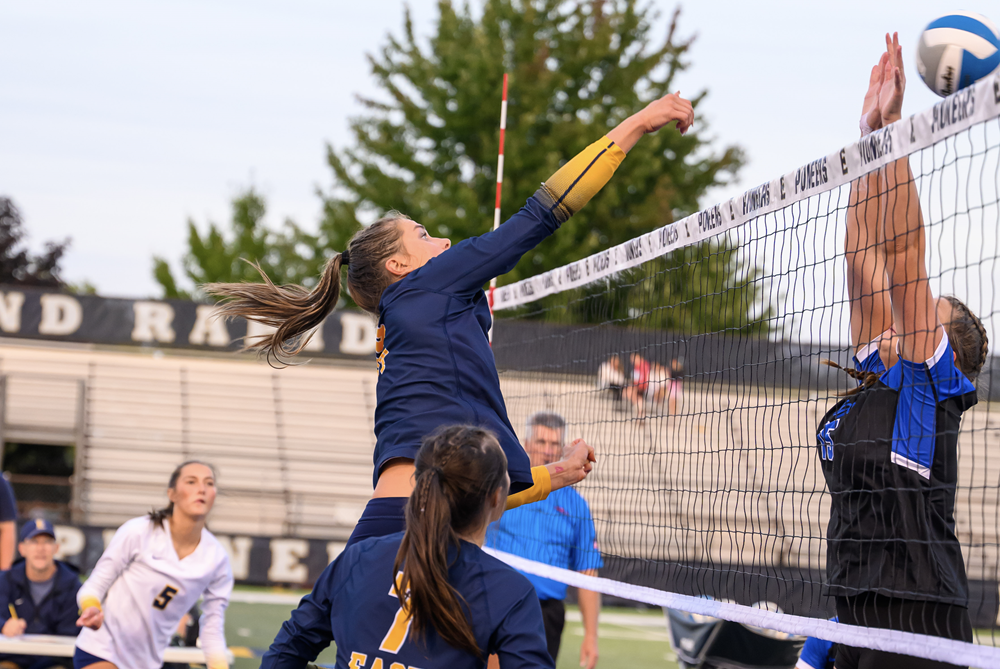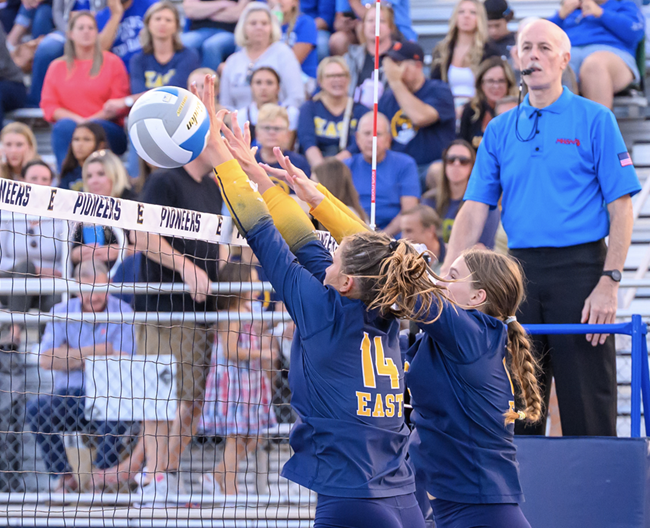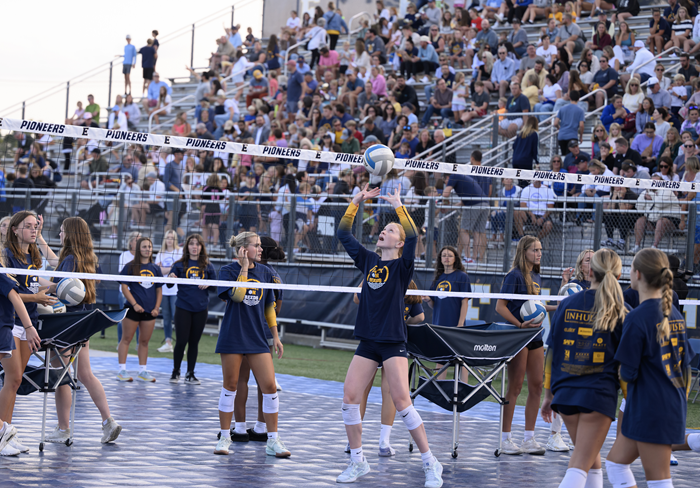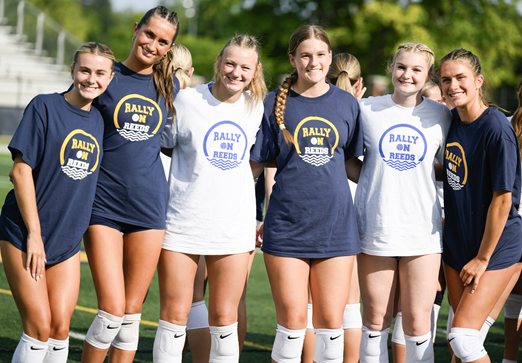
Add, Subtract, Divide, Multiply: MHSAA Not Alone
July 25, 2017
By Rob Kaminski
MHSAA benchmarks editor
This is the third part in a series on MHSAA tournament classification, past and present, that will be published over the next two weeks. This series originally ran in this spring's edition of MHSAA benchmarks.
As the MHSAA faces its most recent classification task with 8-Player Football, and opinions continue to swirl about as to the method, timeframe, location and other procedures, a look around the country provides plenty of company among state association brethren factoring variables into their own equations.
In the Pacific Northwest, the Oregon School Activities Association Football Playoffs are under public scrutiny as leadership ponders a five or six classification format beginning with the 2018-19 school year.
The OSAA has crowned six champions on the gridiron since 2006-07. Many of the state’s smaller schools would like to keep it that way, while larger schools lean toward a five-classification system, citing larger leagues, ease of travel and credibility to state championships as the advantages.
Still others would prefer more than six classes, pointing to safety issues and the opportunity to increase participation numbers as positives.
Moving southeast of Oregon, the Nevada Interscholastic Activities Association recently voted to hold serve on a classification proposal that was volleyed to the membership.
However, changes still could be forthcoming by as early as the 2018-19 season which would add a fifth classification in more populated southern Nevada while allowing northern schools to participate in four classifications. Such divisions could mean no state championship for the fifth class in southern Nevada.
Because of that, the NIAA wants equal numbers of schools in each classification on both ends of the state. Complicating the issue is the fact that the 24 largest schools in the state, by enrollment, are all in Clark County in Southern Nevada.
Across Nevada’s border into Arizona, charter schools are asking the Arizona Interscholastic Association to reconsider classification that was voted upon and approved in September 2015. That agreement called for the largest 33 percent of charter schools by enrollment to be placed in the state’s largest school classification, 3A, the middle 33 percent into 2A, and the smallest 33 percent into 1A.
Less than two years later the charter schools have had a change of heart and have asked to be considered the same as other Arizona public schools and be placed appropriately by enrollment beginning with the 2018-19 school year.
The situation in Arizona further illustrates how the public/private debate that all state associations have faced throughout existence now has the added dynamic of rapidly growing charter schools in today’s educational system, along with virtual school enrollment.
In the nation’s heartland, Nebraska has retooled its football classifications by using enrollment of boys students only in its schools rather than total enrollment. The Nebraska School Activities Association football-playing schools will kick off the 2018 season using this alignment.
Nebraska has three classes of 11-player football, with the smallest class divided in two, Class C-1 and C-2. The state also will have 8-player football for boys enrollments under 47, and the NSAA will sponsor a new 6-player tournament in 2018 for schools with 27 or fewer boys.
“This is a good proposal because some schools have a sizable imbalance between the number of boys and girls, and there’s a large gap (in enrollment) between the largest and smallest schools in Classes A and B,” NSAA executive director Jim Tenopir said. “I think this addresses both of those concerns.”
Swimmers in Georgia, meanwhile, will feel like they are moving with the current, rather than upstream in 2017-18, as the Georgia High School Association recently doubled the number of team championship events from two to four.
Swim enthusiasts can also count on longer days at the finals, as the top 30 finishers from the prelims will advance to the finals instead of 20, and all championship events will have three heats versus two.

EGR, Hopkins Take Volleyball Match to Football Field for 'Rally on Reeds'
By
Dean Holzwarth
Special for MHSAA.com
August 28, 2024
EAST GRAND RAPIDS – Memorial Field in late August is typically filled with the sounds of football pads smashing against each other and raucous crowds celebrating touchdowns.
 Last week, however, a different environment engulfed East Grand Rapids’ football field.
Last week, however, a different environment engulfed East Grand Rapids’ football field.
With picturesque Reeds Lake as the backdrop, an outdoor volleyball match between the Pioneers and visiting Hopkins was played on the 50-yard line.
The first-year event was dubbed “Rally on Reeds,” and it turned out to be a special gathering of the East Grand Rapids community.
“It was electric,” first-year Pioneers coach Bruce Hungerford said. “Like a ruckus football game meets a minor league baseball-type environment. It was very cool."
More than 2,000 people attended the match, which ended with EGR sweeping the Vikings 3-0.
It was a spectacle that included a carnival area, a visit from members of the Grand Rapids Rise professional volleyball team, a band and the opportunity to showcase the sport of high school volleyball in a non-traditional setting.
 “It was unreal,” EGR junior captain Sadie Devlaeminck said. “It was just so great to see how much the community showed up for the volleyball team and to see the environment that we played in. It was just crazy.”
“It was unreal,” EGR junior captain Sadie Devlaeminck said. “It was just so great to see how much the community showed up for the volleyball team and to see the environment that we played in. It was just crazy.”
Hungerford had an idea for an event like this before being hired for the job. He was eager to implement it.
“I had it in my plan to build a community, and host a lot of home games,” Hungerford said. “EGR has an awesome football setup because there’s no track around the football field and it just sits perfectly.
“I had the idea well before the Nebraska (volleyball) game (last season) and mostly because of Grand Haven. They do the Battle of the Boardwalk, so I knew people did it outside for scrimmages and games. With this being my first game coaching, I thought this would be a cool way to try and get these little kids that I’ve coached to come and see it, and it went from there.”
Nearby Aquinas College rented EGR the court, and the nets and stanchions were supplied by Grand Rapids Community College.
While excitement built, the process of putting together the court on the football field proved to be a challenging and time-consuming task.
 It took more than seven hours for the court to be constructed with the finishing touches completed at 6:48 p.m., 12 minutes before the start of the match.
It took more than seven hours for the court to be constructed with the finishing touches completed at 6:48 p.m., 12 minutes before the start of the match.
“The turf provided a tougher environment because of the squares, and you can’t just slide them in,” Hungerford said. “We had to restart a few times and I thought we were absolutely dead in the water at one point. But we got the lines down, and it wasn’t going anywhere.”
While anxiety surrounded the installation of the court, that was eased when play started.
“I was a little nervous because the court took so long to set up,” Devlaeminck said. “And I thought it was going to be harder than indoors because of all the different elements like the wind. But I knew it was going to be a lot of fun playing with my team in a football stadium.
“It was nice for the football team to come and sit in the student section and show support and cheer us on. I thought it was great.”
Hungerford said the Hopkins’ players and coaches enjoyed it as well.
“I didn’t want them to think that they were coming to our prom,” he said. “We were in constant contact with them, and their principal participated in the dunk tank. We got one of their kids to be interviewed by the media, and it was a fun community connection. They all loved it, and they said it was super cool. They were glad they came.”
 Sophomore Kenzee Stanley-Eldred was overwhelmed by the amount of support the Pioneers received.
Sophomore Kenzee Stanley-Eldred was overwhelmed by the amount of support the Pioneers received.
“We weren’t used to playing in front of very big crowds and don't usually have much of a student section, but a lot of people from our school came for this,” Stanley-Eldred said. “And also just the environment of playing outside on a sport court instead of being in a gym. Being outside feels a lot different.”
Organizers hope to make it an annual event by having different teams each year play against EGR.
For many in attendance, this was their first glimpse of high school volleyball.
“A lot of people that I knew and I talked to after the game said it was the first time ever having anything to do with the sport, so it was really cool that we let them into that,” Stanley-Eldred said. “I think it had a big impact with just how many people showed up and were willing to support one another, especially when it was doing something so new and different.”
 Dean Holzwarth has covered primarily high school sports for Grand Rapids-based WOOD-TV for five years after serving at the Grand Rapids Press and MLive for 16 years along with shorter stints at the Ionia Sentinel and WZZM. Contact him at [email protected] with story ideas for Allegan, Kent and Ottawa counties.
Dean Holzwarth has covered primarily high school sports for Grand Rapids-based WOOD-TV for five years after serving at the Grand Rapids Press and MLive for 16 years along with shorter stints at the Ionia Sentinel and WZZM. Contact him at [email protected] with story ideas for Allegan, Kent and Ottawa counties.
PHOTOS (Top) An East Grand Rapids hitter puts the ball past a Hopkins block during last week’s “Rally on Reeds” game one EGR’s football field. (2) A pair of Pioneers work to get their hands on a kill attempt. (3) East Grand Rapids warms up as fans fill the stands. (4) East Grand Rapids and Hopkins players take a photo together wearing their “Rally on Reeds” shirts. (Photos by Kathy Hoffman/Michigan Sports Photo.)

